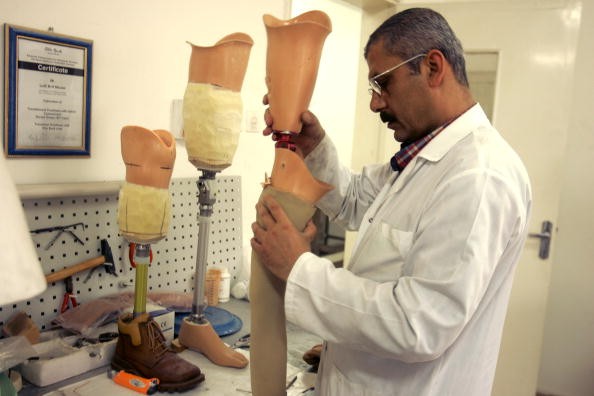
Engineers from Stanford University in California have successfully invented a new technology that holds a promise in the creation of touch-sensitive prosthetic limbs. This design of artificial skin crafted from plastic material is able to sense pressure and transmit signals to a living brain cell.
Over a decade of trying to develop a good substitute for natural human skin, Professor Zhenan Bao at Stanford was able to achieve this purpose using a two-ply plastic system. She and her team created a flexible electronic material with a top layer that has a sensing mechanism and a bottom layer that acts as circuit for electric signals. The design is able to imitate the human skin's sense of touch, a characteristic that distinguishes a light finger tap from a firm grip.
"This is the first time a flexible, skin-like material has been able to detect pressure and also transmit a signal to a component of the nervous system," says Bao as quoted in a press release of Stanford.
Years ago, Bao and her team noted the possibility of using plastics as pressure sensors. The pressure sensitivity of these materials may be increased by means of incorporating waffle patterns into the plastic, thus, condensing its molecular springs.
Now, to be able to achieve that, the team utilized billions of carbon nanotubes and scattered them through the waffled plastic which will serve as the top layer. This renders the plastics the capability to conduct electricity as the nanotubes come closer together when pressure is applied. For every short electronic pulse generated, it will be received by a sensing mechanism which then sends this signal to a nerve cell through the second ply (bottom).
Researchers also bioengineered a line of neurons to make them sensitive to light pulses. Short electronic signals due to pressure are translated into light pulses which will activate the created neurons. This makes it possible for the 'artificial skin' to display the same mechanism of touch that natural human skin has.
Although the invention showed promising functions, the research team admitted that there is still a lot of work needed and would definitely require time before the design can be used for practical applications. At present, the team plans to develop other sensors that can also mimic the remaining five sensing mechanisms of the human skin and integrate these touch feedbacks for the replacement of limbs.
The research appears in the journal Science.

